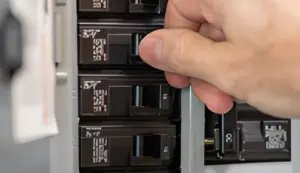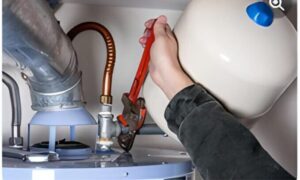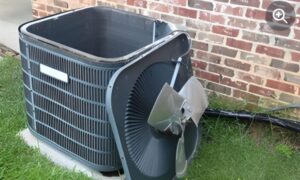Imagine a home where each room is perfectly climate-controlled, tailored to your preferences and needs. No more fighting over the thermostat, no more hot or cold spots. With HVAC zoning systems, this vision becomes a reality. These sophisticated systems divide your home into zones, allowing you to personalize the temperature in each area.
But it doesn't stop there. HVAC zoning systems also offer energy efficiency benefits, reducing your carbon footprint and lowering utility bills. In this discussion, we will explore the benefits, functionality, and installation process of HVAC zoning systems, as well as the role of smart technology in optimizing comfort and energy savings.
Get ready to transform your home into a haven of customized comfort.
Benefits of HVAC Zoning Systems
HVAC zoning systems offer numerous benefits, providing personalized cooling in each room, energy savings, and improved comfort and satisfaction for homeowners. By dividing the home into different zones with individual thermostats, HVAC cooling zones can deliver personalized cooling to each room. This ensures that occupants can set their desired temperature for their specific space, eliminating hot and cold spots in the home.
Moreover, HVAC zoning systems contribute to energy savings by only cooling the rooms that are being used. This reduces energy consumption, resulting in lower energy bills and a reduced carbon footprint.
With improved comfort and satisfaction, homeowners can enjoy a more tailored and efficient cooling experience. HVAC zoning systems are a smart investment for those seeking personalized cooling, energy efficiency, and enhanced home comfort.
How HVAC Zoning Systems Work
With a clear understanding of the benefits of HVAC zoning systems, it is essential to delve into the technical aspects of how these systems actually work.
HVAC zoning systems work by dividing the home into different zones, each with its own thermostat. Dampers in the ductwork control the airflow to each zone, allowing for personalized cooling in each room.
The thermostats send signals to adjust the dampers based on temperature needs, ensuring optimal comfort. Additionally, sensors detect occupancy and activity levels, optimizing energy efficiency by adjusting cooling or heating based on room occupancy.
Smart technology allows for remote control through smartphone apps or voice commands, providing increased convenience and energy savings. By only cooling the rooms that are being used, HVAC zoning systems reduce energy consumption, lower energy bills, and eliminate hot and cold spots in the home.
Smart HVAC Technology and Energy Efficiency
Smart HVAC technology is a key component in achieving optimal energy efficiency and comfort in homes. Here are three ways in which smart HVAC technology enhances energy efficiency:
- Occupancy-based cooling: Smart HVAC systems use sensors to detect occupancy in each room. By adjusting the cooling or heating based on room occupancy, energy is not wasted on empty spaces. This targeted approach ensures that energy is only consumed when and where it is needed.
- Remote control and monitoring: Smart technology allows homeowners to remotely control and monitor their HVAC systems through smartphone apps or voice commands. This enables them to adjust settings and optimize energy usage from anywhere, resulting in increased comfort and convenience.
- Reduction in energy consumption: By utilizing occupancy-based cooling and remote control capabilities, smart HVAC technology helps reduce overall energy consumption. This leads to a significant decrease in energy bills and carbon footprint, making it an environmentally friendly choice for homeowners.
With these benefits, smart HVAC technology is a valuable addition to any home seeking to maximize energy efficiency and comfort.
Installation and Maintenance Tips
To ensure proper installation and maintenance of HVAC zoning systems, it is crucial to consult with a qualified HVAC professional. These professionals have the knowledge and expertise to assess your home layout and design a suitable zoning system. They can provide valuable recommendations on damper and sensor locations for optimal airflow and offer maintenance tips to keep the system running smoothly.
Regular inspections and maintenance by professionals are essential for efficient operation and longevity of the system. It is important to follow manufacturer guidelines for installation and maintenance and to stay updated on technology and software updates. Additionally, cleaning and maintaining dampers and sensors regularly will ensure their proper functioning.
Contacting an HVAC Professional
When seeking guidance and expertise for the successful installation and maintenance of an HVAC zoning system, it is imperative to contact a qualified HVAC professional. These professionals possess the necessary knowledge and experience to ensure that the system is installed correctly and functions optimally.
Here are three reasons why contacting an HVAC professional is essential:
- Technical Expertise: HVAC professionals have a deep understanding of heating and cooling systems, including zoning systems. They can assess your home's layout and design a suitable zoning system that meets your specific needs.
- Proper Installation: Installing an HVAC zoning system requires careful planning and execution. HVAC professionals are trained to handle the complexities involved in the installation process, ensuring that all components are properly connected and calibrated for optimal performance.
- Maintenance and Support: HVAC professionals provide valuable maintenance tips and recommendations to keep your zoning system running smoothly. They can conduct regular inspections, clean and maintain dampers and sensors, and perform any necessary repairs or adjustments to ensure efficient operation and longevity of the system.
Maximizing Comfort and Energy Savings
In order to achieve maximum comfort and energy savings, it is crucial to implement effective strategies and utilize the advanced features of HVAC zoning systems.
These systems offer personalized cooling in each room with HVAC cooling zones, allowing for energy savings by only cooling the rooms that are being used. By doing so, homeowners can experience a reduction in energy bills and carbon footprint.
Furthermore, HVAC zoning systems eliminate hot and cold spots in the home, resulting in improved comfort and satisfaction for everyone. These systems work by dividing the home into different zones with individual thermostats, and dampers in the ductwork control airflow to each zone. Thermostats send signals to adjust dampers based on temperature needs, while sensors detect occupancy and activity levels for optimized energy efficiency.
Smart technology allows for remote control through smartphone apps or voice commands, ensuring increased comfort, convenience, and energy savings.
Step-by-Step Guide to Installing HVAC Zoning Systems
The installation process for HVAC zoning systems involves several important steps to ensure optimal functionality and efficiency. Here is a step-by-step guide to installing HVAC zoning systems:
- Planning and Design:
- Assess the layout of your home and identify the zones you want to create.
- Determine the number and location of thermostats and dampers needed for each zone.
- Consider factors such as room size, insulation, and occupancy patterns to optimize comfort and energy efficiency.
- Installation of Dampers and Thermostats:
- Install dampers in the ductwork to control airflow to each zone.
- Position thermostats in each zone to monitor and adjust temperature settings.
- Connect the dampers and thermostats to a central control panel or smart HVAC system.
- Wiring and System Setup:
- Connect the control panel to the dampers and thermostats.
- Configure the system settings, such as temperature ranges for each zone.
- Test the system to ensure proper communication and functionality.
Frequently Asked Questions
How Much Does It Cost to Install an HVAC Zoning System?
The cost of installing an HVAC zoning system can vary depending on factors such as the size of the home, number of zones, type of equipment, and any additional features. It is recommended to consult with an HVAC professional for a personalized quote.
Can I Retrofit My Existing HVAC System With Zoning Capabilities?
Yes, it is possible to retrofit an existing HVAC system with zoning capabilities. An HVAC professional can assess the system, recommend the appropriate zoning equipment, and install it to transform your home into a more efficient and comfortable space.
How Long Does It Take to Install an HVAC Zoning System?
The installation time for an HVAC zoning system can vary depending on the size and complexity of the home. Generally, it takes a few days to complete the installation and ensure proper functioning of the system.
Are There Any Additional Energy-Saving Features That Can Be Added to an HVAC Zoning System?
Yes, additional energy-saving features can be added to an HVAC zoning system. These include smart thermostats with occupancy sensors, which adjust cooling or heating based on room occupancy, reducing energy waste in unoccupied areas.
Are There Any Potential Drawbacks or Limitations to Using an HVAC Zoning System?
Potential drawbacks or limitations of using an HVAC zoning system include initial installation costs, the need for professional expertise, and potential issues with system compatibility. However, these can be mitigated by proper installation, regular maintenance, and consulting with HVAC professionals for guidance.
Conclusion
In conclusion, HVAC zoning systems offer numerous benefits. One of these benefits is increased comfort. By dividing the home into different zones and using individual thermostats and dampers, these systems allow for customized temperature control in each area. This means that homeowners can adjust the temperature to their liking in specific rooms without affecting the rest of the house.
Another benefit of HVAC zoning systems is energy efficiency. By only cooling the occupied rooms, these systems optimize energy usage. This can result in significant energy savings and lower utility bills. Additionally, the integration of smart technology further enhances energy efficiency. Homeowners can remotely control their HVAC system and make adjustments as needed, even when they are not at home.
To ensure the effectiveness of HVAC zoning systems, proper installation and maintenance are crucial. It is important to consult with HVAC professionals who can provide guidance on the best zoning options for your home and ensure that the system is installed correctly. Regular maintenance and inspections are also necessary to keep the system running efficiently and to address any potential issues.
Overall, HVAC zoning systems offer a range of benefits for homeowners. Increased comfort, energy efficiency, and customization options make these systems a worthwhile investment. By taking the necessary steps to install and maintain the system properly, homeowners can maximize their comfort and energy savings.







